The worst technology failures of 2023
The Titan submersible, lab-grown chicken, and GM’s wayward Cruise robotaxis made our annual list of the worst in tech.
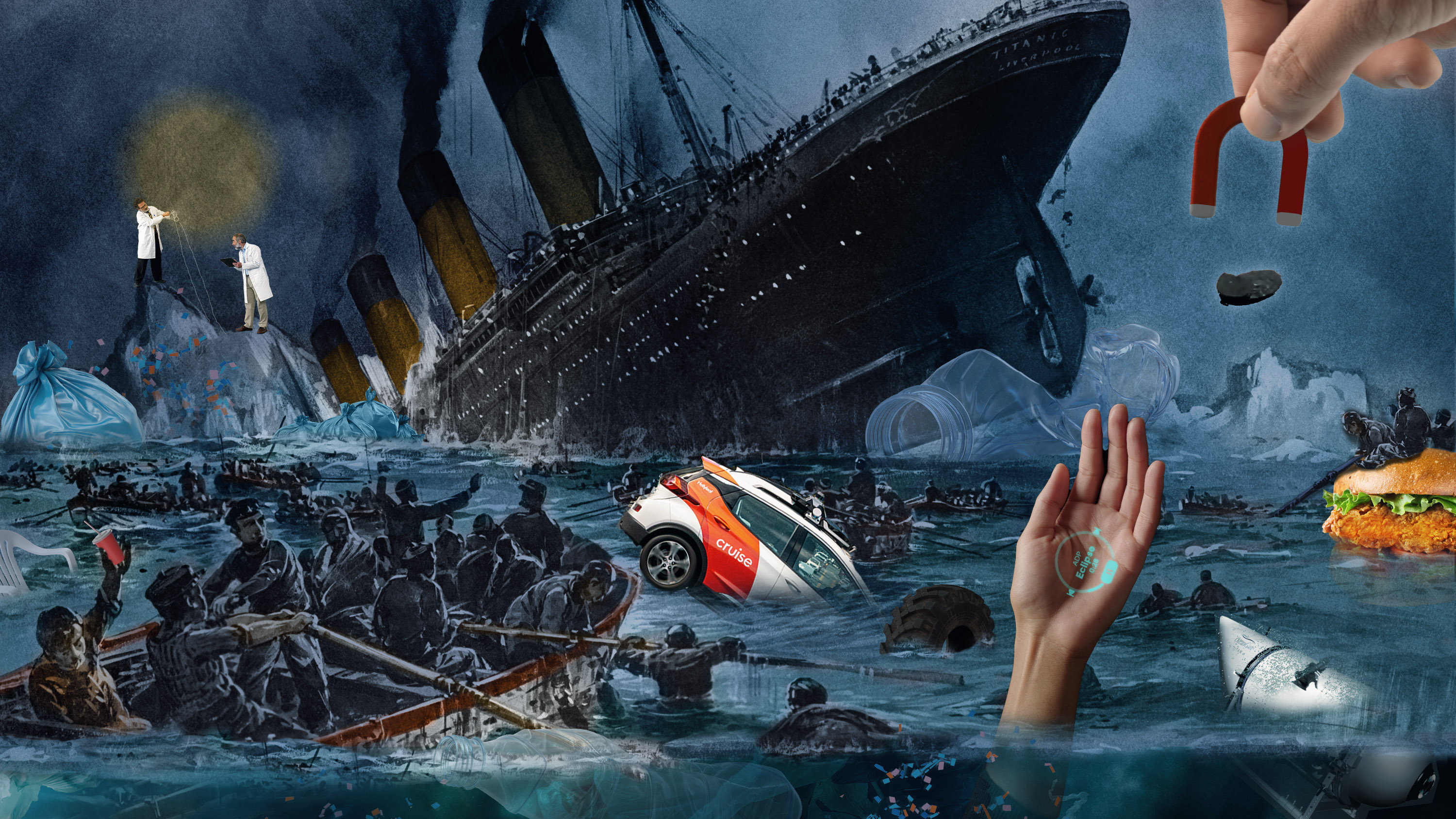
Welcome to our annual list of the worst technologies. This year, one technology disaster in particular holds lessons for the rest of us: the Titan submersible that imploded while diving to see the Titanic.
Everyone had warned Stockton Rush, the sub’s creator, that it wasn’t safe. But he believed innovation meant tossing out the rule book and taking chances. He set aside good engineering in favor of wishful thinking. He and four others died.
To us it shows how the spirit of innovation can pull ahead of reality, sometimes with unpleasant consequences. It was a phenomenon we saw time and again this year, like when GM’s Cruise division put robotaxis into circulation before they were ready. Was the company in such a hurry because it’s been losing $2 billion a year? Others find convoluted ways to keep hopes alive, like a company that is showing off its industrial equipment but is quietly still using bespoke methods to craft its lab-grown meat. The worst cringe, though, is when true believers can’t see the looming disaster, but we do. That’s the case for the new “Ai Pin,” developed at a cost of tens of millions, that’s meant to replace smartphones. It looks like a titanic failure to us.
Titan submersible
This summer we were glued to our news feeds as drama unfolded 3,500 meters below the ocean’s surface. An experimental submarine with five people aboard was lost after descending to see the wreck of the Titanic.
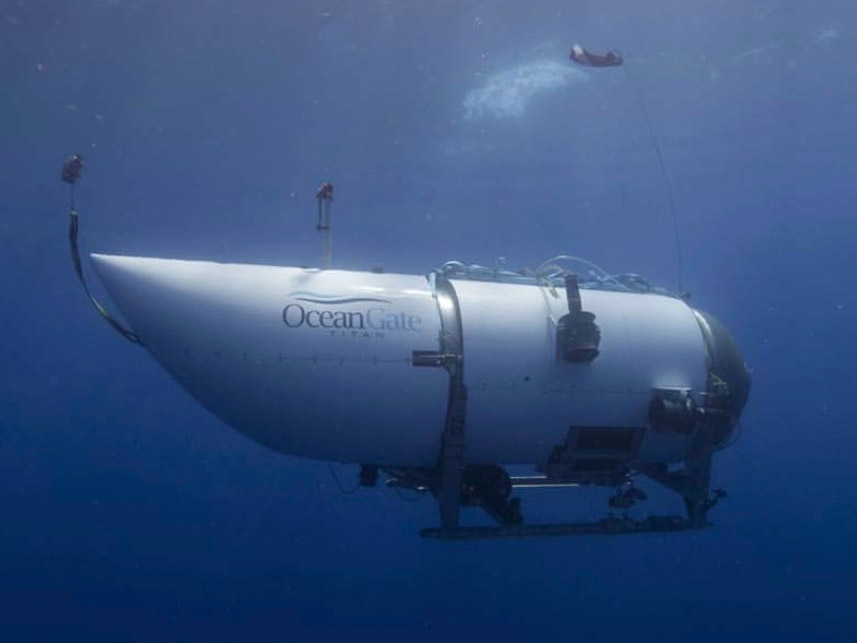
The Titan was a radical design for a deep-sea submersible: a minivan-size carbon fiber tube, operated with a joystick, that aerospace engineer Stockton Rush believed would open the depths to a new kind of tourism. His company, OceanGate, had been warned the vessel hadn’t been proved to withstand 400 atmospheres of pressure. His answer? “I think it was General MacArthur who said ‘You’re remembered for the rules you break,” Rush told a YouTuber.
But breaking the rules of physics doesn’t work. On June 22, four days after contact was lost with the Titan, a deep-sea robot spotted the sub’s remains. It was most likely destroyed in a catastrophic implosion.
In addition to Rush, the following passengers perished:
- Hamish Harding, 58, tourist
- Shahzada Dawood, 48, tourist
- Suleman Dawood, 19, tourist
- Paul-Henri Nargeolet, 77, Titanic expert
More: The Titan Submersible Was “an Accident Waiting to Happen” (The New Yorker), OceanGate Was Warned of Potential for “Catastrophic” Problems With Titanic Mission (New York Times), OceanGate CEO Stockton Rush said in 2021 he knew he’d “broken some rules” (Business Insider)
Lab-grown meat
Instead of killing animals for food, why not manufacture beef or chicken in a laboratory vat? That’s the humane idea behind “lab-grown meat.”
The problem, though, is making the stuff at a large scale. Take Upside Foods. The startup, based in Berkeley, California, had raised more than half a billion dollars and was showing off rows of big, gleaming steel bioreactors.
But journalists soon learned that Upside was a bird in borrowed feathers. Its big tanks weren’t producing its flagship "whole textured chicken" filets; to produce those it was growing chicken skin cells in much smaller laboratory flasks. Thin layers of cells were then being manually scooped up and pressed into chicken pieces. In other words, Upside was using lots of labor, plastic, and energy to make hardly any meat.
Samir Qurashi, a former employee, told the Wall Street Journal he knows why Upside puffed up the potential of lab-grown food. “It’s the ‘fake it till you make it’ principle,” he said.
And even though lab-grown chicken has FDA approval, there’s doubt whether lab meat will ever compete with the real thing. Chicken goes for $4.99 a pound at the supermarket. Upside still isn’t saying how much the lab version costs to make, but a few bites of it sell for $45 at a Michelin-starred restaurant in San Francisco.
Upside has admitted the challenges. “We signed up for this work not because it’s easy, but because the world urgently needs it,” the company says.
Update: Upside Foods responded to this story with the following statement from its CEO, Uma Valeti.
“We are disappointed that this article fails to provide an accurate picture of the progress of cultivated meat and does not provide the right context for UPSIDE’s first product. UPSIDE has successfully and repeatedly demonstrated that we can scale our suspension technology to make delicious ground-textured and blended products. This platform is the basis for the commercial plant we are currently building, and will enable large scale production pending regulatory approval. UPSIDE is proud to have established a high-watermark with our whole textured chicken product that’s being served today. We will continue to be pioneers addressing the challenge of sustainably feeding a growing global population while minimizing environmental impact, and remain steadfast in our goal of bringing delicious and safe cultivated meat to consumers. While we know there will be many challenges ahead, UPSIDE chooses to work with optimism, grit and dogged determination towards our vision for a better future, buoyed by the progress we’ve already made and the urgency of the work ahead.”
More: I tried lab-grown chicken at a Michelin-starred restaurant (MIT Technology Review), The Biggest Problem With Lab-Grown Chicken Is Growing the Chicken (Bloomberg), Insiders Reveal Major Problems at Lab-Grown-Meat Startup Upside Foods (Wired)
Cruise robotaxi
Sorry, autopilot fans, but we can’t ignore the setbacks this year. Tesla just did a massive software recall after cars set on self-driving mode slammed into emergency vehicles. But the biggest reversal was at Cruise, the division of GM that became the first company to offer driverless taxi rides in San Francisco, day or night, with a fleet exceeding 400 cars.
Cruise argues that robotaxis don’t get tired, don’t get drunk, and don’t get distracted. It even ran a full-page newspaper ad declaring that “humans are terrible drivers.”
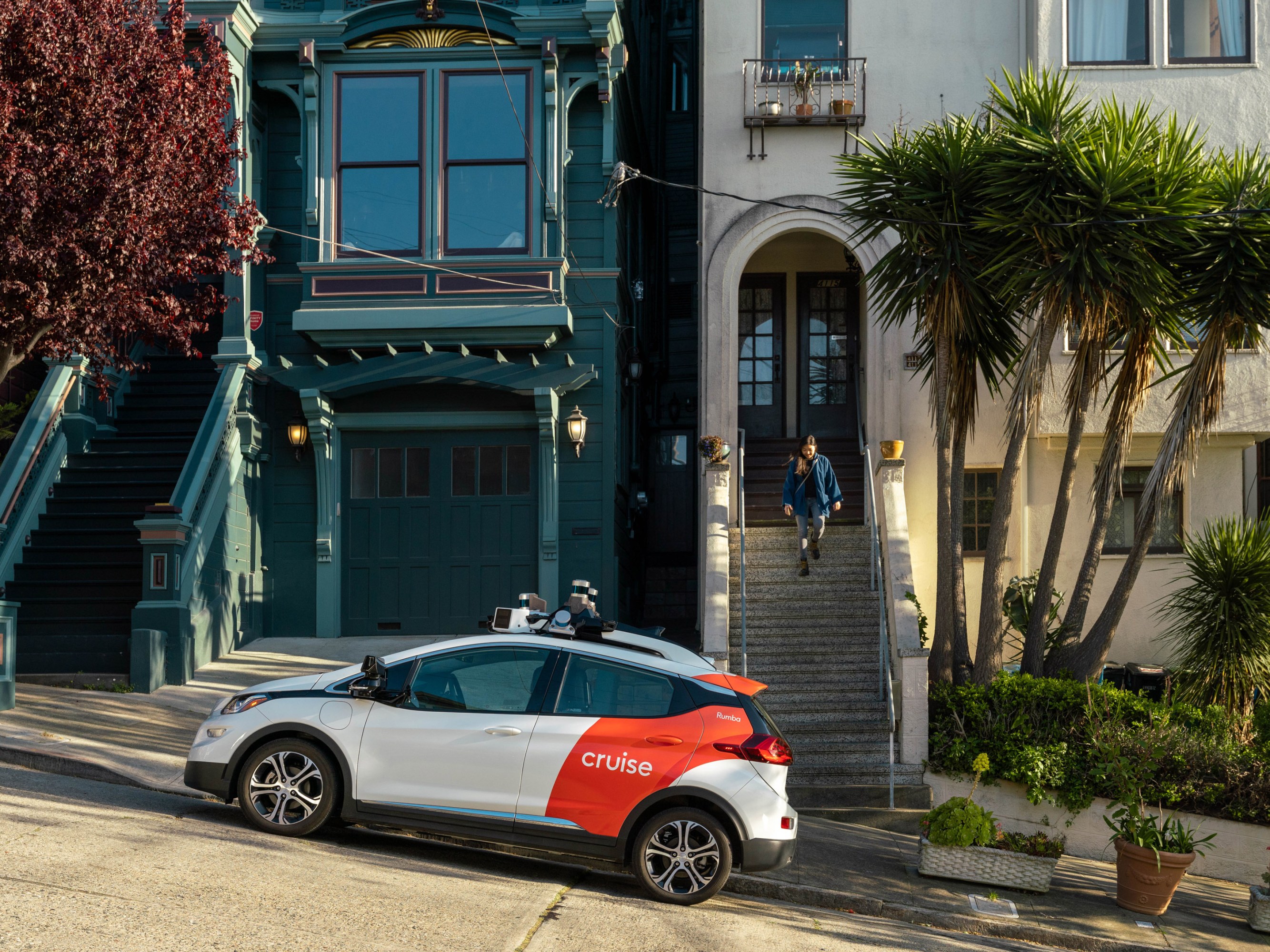
But Cruise forgot that to err is human—not what we want from robots. Soon, it was Cruise’s sensor-laden Chevy Bolts that started racking up noticeable mishaps, including dragging a pedestrian for 20 feet. This October, the California Department of Motor Vehicles suspended GM’s robotaxis, citing an “unreasonable risk to public safety.”
It’s a blow for Cruise, which has since laid off 25% of its staff and saw its cofounder and CEO, Kyle Vogt, a onetime MIT student, resign from the company. “We have temporarily paused driverless service,” Cruise’s website now reads. It says it’s reviewing safety and taking steps to “regain public trust.”
More: GM’s Self-Driving Car Unit Skids Off Course (Wall Street Journal), Important Updates from Cruise (Getcruise.com)
Plastic proliferation
Plastic is great. It’s strong, it’s light, and it can be pressed into just about any shape: lawn chairs, bobbleheads, bags, tires, or thread.
The problem is there’s too much of it, as Doug Main reported in MIT Technology Review this year. Humans make 430 million tons of plastic a year (significantly more than the weight of all people combined), but only 9% gets recycled. The rest ends up in landfills and, increasingly, in the environment. Not only does the average whale have kilograms of the stuff in its belly, but tiny bits of “microplastic” have been found in soft drinks, plankton, and human bloodstreams, and even floating in the air. The health effects of spreading microplastic pollution have barely been studied.
Awareness of the planetary scourge is growing, and some are calling for a “plastics treaty” to help stop the pollution. It’s going to be a hard sell. That’s because plastic is so cheap and useful. Yet researchers say the best way to cut plastic waste is not to make it in the first place.
More: Think your plastic is being recycled? Think again (MIT Technology Review), Oh Good, Hurricanes Are Now Made of Microplastics (Wired)
Humane Ai Pin
The New York Times declared it Silicon Valley’s “Big, Bold Sci-Fi Bet” for what comes after the smartphone. The product? A plastic badge called the Ai Pin, with a camera, chips, and sensors.
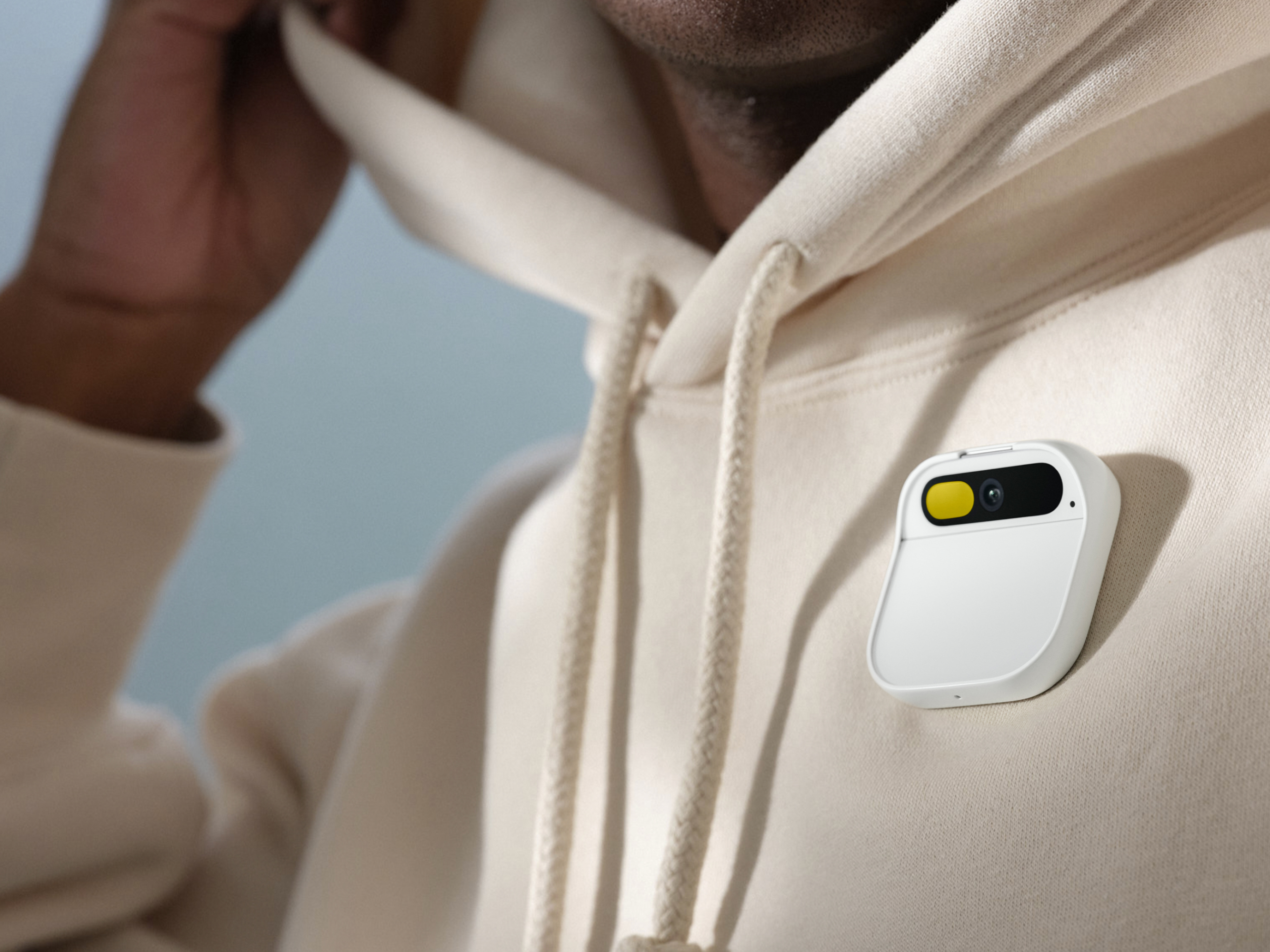
A device to wean us off our phone addiction is a worthy goal, but this blocky $699 pin (which also requires a $24-a-month subscription) isn’t it. An early review called the device, developed by startup Humane Ai, “equal parts magic and awkward.” Emphasis on the awkward. Users must speak voice commands to send messages or chat with an AI (a laser projector in the pin will also display information on your hand). It weighs as much as a golf ball, so you probably won’t be attaching it to a T-shirt.
It is the creation of a husband-and-wife team of former Apple executives, Bethany Bongiorno and Imran Chaudhri, who were led to their product idea with the guidance of a Buddhist monk named Brother Spirit, raising $240 million and filing 25 patents along the way, according to the Times.
Clearly, there’s a lot of thought, money, and engineering involved in its creation. But as The Verge’s wearables reviewer Victoria Song points out, “it flouts the chief rule of good wearable design: you have to want to wear the damn thing.” As it is, the Ai Pin is neat, but it’s still no competition for the lure of a screen.
More: Can A.I. and Lasers Cure Our Smartphone Addiction? (New York Times) Screens are good, actually (The Verge)
Social media superconductor
A room-temperature superconductor is a material offering no electrical resistance. If it existed, it would make possible new types of batteries and powerful quantum computers, and bring nuclear fusion closer to reality. It’s a true Holy Grail.
So when a report emerged this July from Korea that a substance called LK-99 was the real thing, attention seekers on the internet were ready to share. The news popped up first in Asia, along with an online video of a bit of material floating above a magnet. Then came the booster fuel of social media hot takes.
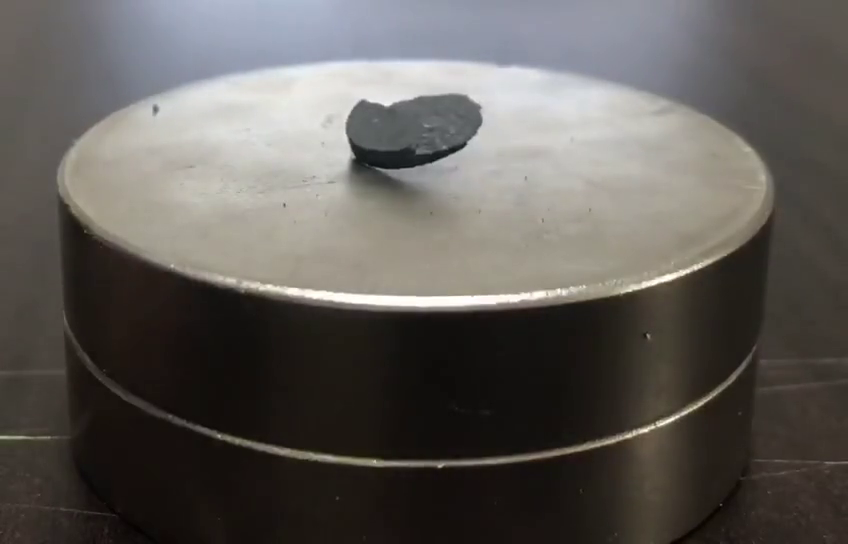
“Today might have seen the biggest physics discovery of my lifetime,” said a post to X that has been viewed 30 million times. “I don’t think people fully grasp the implications … Here’s how it could totally change our lives.”
No matter that the post had been written by a marketer at a coffee company. It was exciting—and hilarious—to see well-funded startups drop their work on rockets and biotech to try to make the magic substance. Kenneth Chang, a reporter at the New York Times, dubbed LK-99 “the Superconductor of the Summer.”
But summer’s dreams soon ripped at the seams after real physicists couldn’t replicate the work. No, LK-99 is not a superconductor. Instead, impurities in the recipe could have misled the Korean researchers—and, thanks to social media, the rest of us too.
More: LK-99 Is the Superconductor of the Summer (New York Times) LK-99 isn’t a superconductor—how science sleuths solved the mystery (Nature)
Rogue geoengineering
Solar geoengineering is the idea to cool the planet by releasing reflective materials into the atmosphere. It’s a fraught concept, because it won’t stop the greenhouse effect—only mask it. And who gets to decide to block the sun?
Mexico banned geoengineering trials early this year after a startup called Make Sunsets decided it could commercialize the effort. Cofounder Luke Iseman decided to launch balloons in Mexico designed to disperse reflective sulfur dioxide into the sky. The startup is still selling “cooling credits” for $10 each on its website.
Injecting particles into the sky is theoretically cheap and easy, and climate warming is a huge threat. But moving too fast can create a backlash that stalls progress, according to my colleague James Temple. “They’re violating the rights of communities to dictate their own future,” one critic said.
Iseman remains unrepentant. “I don’t poll billions before taking a flight,” he has said. “I’m not going to ask for permission from every person in the world before I try to do a bit to cool Earth.”
More: The flawed logic of rushing out extreme climate solutions (MIT Technology Review), Mexico bans solar geoengineering experiments after startup’s field tests (The Verge), Researchers launched a solar geoengineering test flight in the UK last fall (MIT Technology Review)
Update: This article stated that Upside Foods vats "weren’t working." It has been updated to clarify they weren’t producing its whole textured chicken product and to include a comment from the company. In addition, the original article stated that Cruise CEO Kyle Vogt was fired. Instead, he resigned.
Keep Reading
Most Popular
How to opt out of Meta’s AI training
Your posts are a gold mine, especially as companies start to run out of AI training data.
Why does AI hallucinate?
The tendency to make things up is holding chatbots back. But that’s just what they do.
The return of pneumatic tubes
Pneumatic tubes were supposed to revolutionize the world but have fallen by the wayside. Except in hospitals.
How a simple circuit could offer an alternative to energy-intensive GPUs
The creative new approach could lead to more energy-efficient machine-learning hardware.
Stay connected
Get the latest updates from
MIT Technology Review
Discover special offers, top stories, upcoming events, and more.